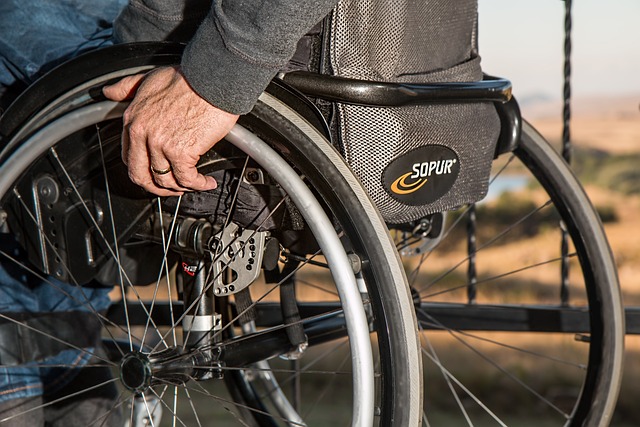Explore Modern Mobility for Seniors: Empowering Independence and Freedom
Modern mobility solutions have revolutionized how seniors maintain their independence and quality of life. From advanced electric scooters to innovative walking aids, today's mobility devices offer unprecedented freedom for older adults who face physical challenges. These technological advances enable seniors to continue participating in daily activities, social events, and community life while ensuring their safety and comfort. Understanding the various options available can help seniors and their families make informed decisions about maintaining an active, independent lifestyle.

The landscape of senior mobility has transformed dramatically over the past decade, offering older adults more choices than ever before to maintain their independence. As the population ages, the demand for effective mobility solutions continues to grow, driving innovation in design, safety features, and accessibility options.
Understanding The Importance Of Mobility For Seniors
Mobility represents far more than simple transportation for seniors—it directly impacts mental health, social connections, and overall quality of life. When older adults can move freely and safely, they maintain their ability to shop independently, visit friends and family, attend medical appointments, and participate in community activities. Research consistently shows that seniors who retain mobility experience lower rates of depression, better cognitive function, and stronger social networks. The psychological benefits of independence cannot be overstated, as maintaining control over daily movement decisions contributes significantly to self-esteem and personal dignity.
Exploring Innovative Transportation Solutions For Seniors
Today’s mobility devices extend far beyond traditional wheelchairs and walkers. Electric mobility scooters have become increasingly sophisticated, featuring improved battery life, enhanced comfort seating, and weather protection options. Three-wheel and four-wheel configurations offer different stability and maneuverability benefits, allowing users to choose based on their specific needs and environments. Lightweight, foldable models enable seniors to transport their mobility aids in vehicles, expanding their range of activities. Additionally, smart mobility devices now incorporate GPS navigation, emergency alert systems, and smartphone connectivity, bridging the gap between mobility and modern technology.
Assessing Safety Features In Senior Mobility Devices
Modern mobility devices prioritize user safety through multiple integrated features. Anti-tip mechanisms prevent accidents on uneven surfaces or slopes, while automatic braking systems engage when users release control handles. LED lighting systems improve visibility during evening use, and reflective materials enhance safety in low-light conditions. Many devices now include speed control settings, allowing users to adjust maximum speeds based on their comfort level and environment. Emergency stop buttons provide immediate control in unexpected situations, while some advanced models feature collision detection systems that automatically slow or stop the device when obstacles are detected.
Finding Community Resources For Enhanced Mobility
Communities across the country offer various resources to support senior mobility needs. Local senior centers often provide information about mobility device lending programs, allowing seniors to test different options before making purchases. Medicare and insurance coverage varies significantly, making it essential for seniors to understand their benefits and coverage limitations. Many communities offer mobility device maintenance services, ensuring devices remain safe and functional over time. Transportation services specifically designed for seniors with mobility challenges provide additional support for medical appointments and essential errands when personal mobility devices are insufficient.
| Device Type | Provider | Key Features | Cost Estimation |
|---|---|---|---|
| 3-Wheel Electric Scooter | Pride Mobility | Compact design, 300 lb capacity, 9-mile range | $1,200 - $2,500 |
| 4-Wheel Heavy Duty Scooter | Golden Technologies | 400 lb capacity, 15-mile range, suspension | $2,000 - $4,000 |
| Portable Folding Scooter | Drive Medical | Lightweight, airline approved, 250 lb capacity | $800 - $1,800 |
| All-Terrain Scooter | Merits Health | Outdoor capability, 350 lb capacity, 12-mile range | $1,500 - $3,200 |
Prices, rates, or cost estimates mentioned in this article are based on the latest available information but may change over time. Independent research is advised before making financial decisions.
Expert Insights On Maintaining Independence Through Mobility
Occupational therapists and mobility specialists emphasize the importance of proper device selection and training. Professional assessments help match individuals with appropriate mobility solutions based on their physical capabilities, living environment, and lifestyle needs. Regular maintenance and proper usage techniques extend device lifespan while ensuring optimal safety. Experts recommend gradual introduction to new mobility devices, allowing users to build confidence and develop proficiency in various environments. Training programs offered by healthcare providers and mobility retailers help seniors maximize the benefits of their chosen devices while minimizing risks.
The evolution of senior mobility solutions continues to accelerate, with emerging technologies promising even greater independence and safety. From improved battery technologies extending device range to smart sensors enhancing navigation capabilities, the future holds tremendous potential for seniors seeking to maintain active, independent lifestyles. By understanding available options, safety considerations, and community resources, seniors can make informed decisions that support their long-term mobility goals and overall well-being.




